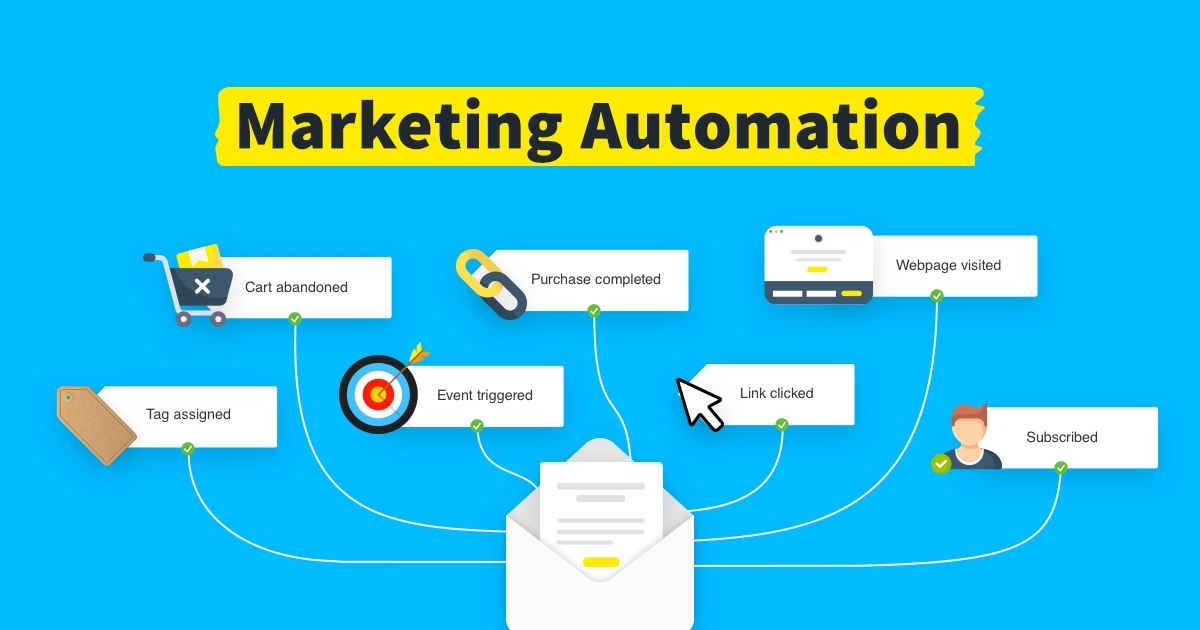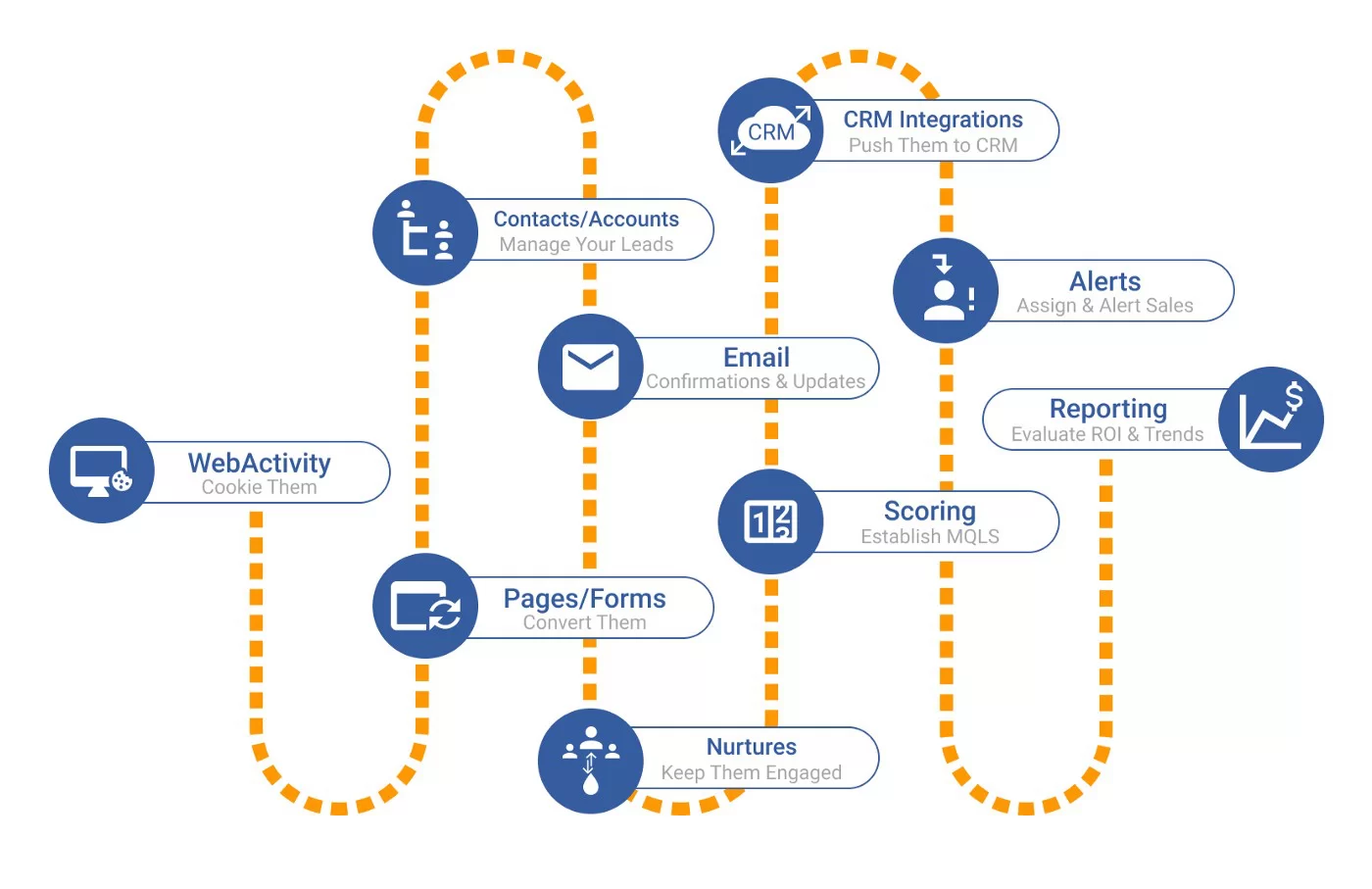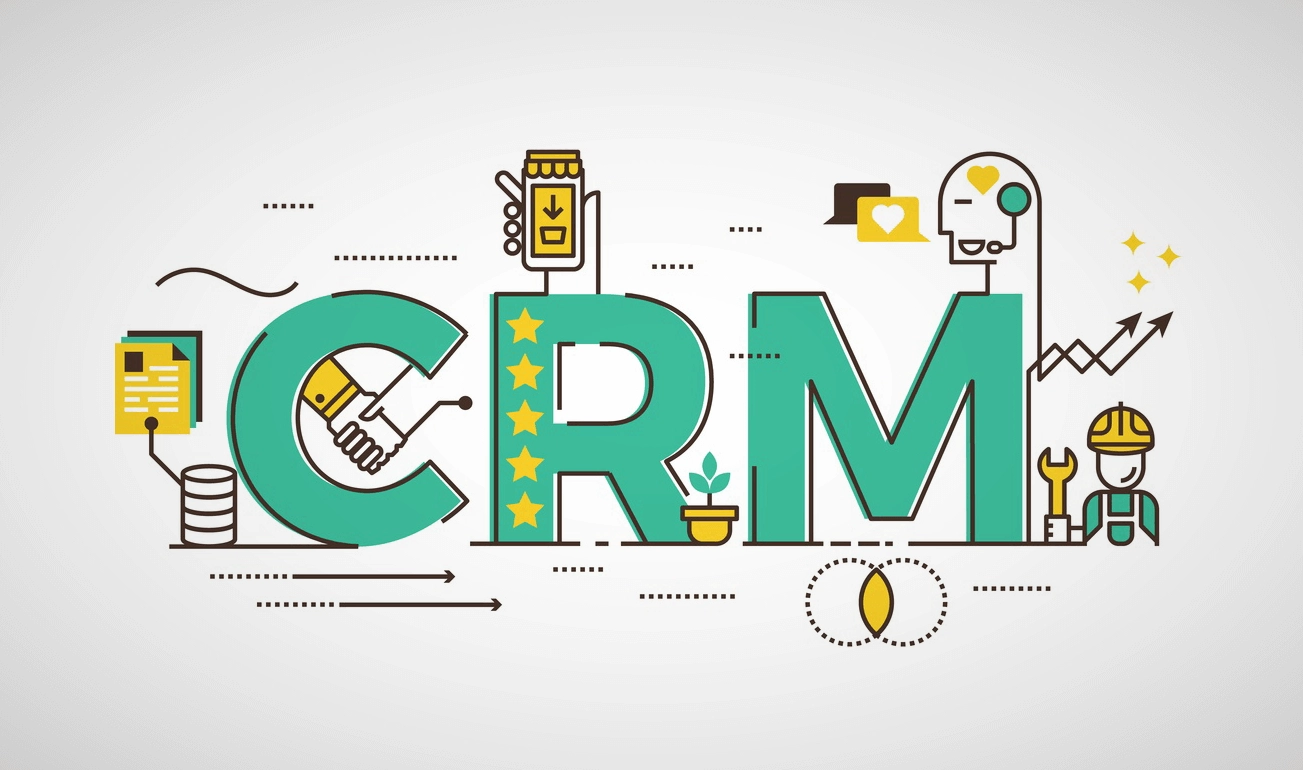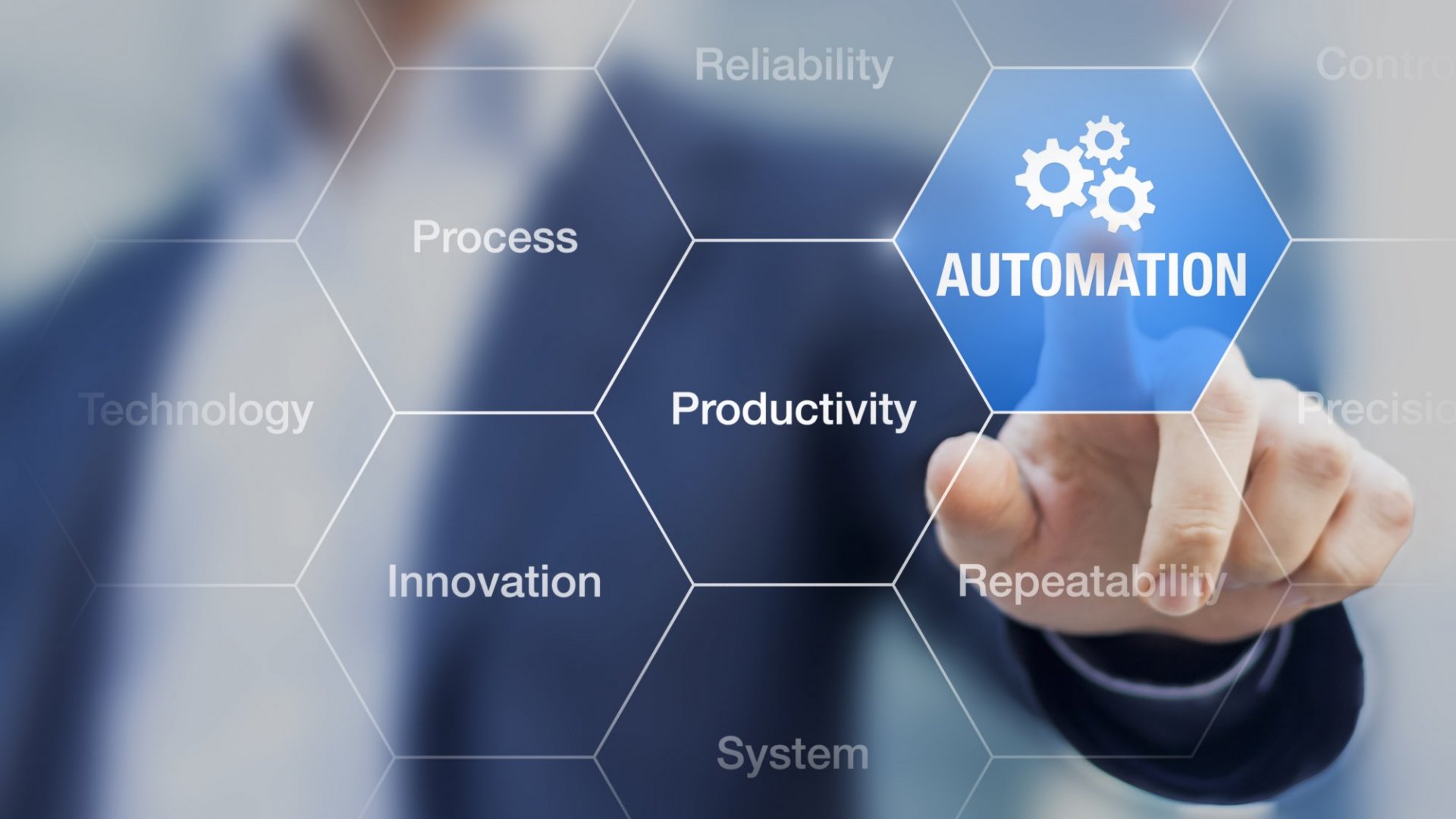What is Marketing Automation?
What is Marketing Automation?
Suppose you need to inform many people (including your former, current, and sometimes even future customers) about an event like your brand campaign in a short period. You are probably thinking of the email option. Do you think there is an easier way to send emails to each person? Can these things be done individually for each person?
The answer is yes! Marketing automation is the use of software to automate marketing. Marketing automation software can automate repetitive tasks such as email marketing, social media posts, and advertising campaigns.
Marketing automation can not bring the same result to all your customers; for example, if you are in the last stage of purchase, you can receive one message, and in other stages, the message you receive will be different. The technology behind it makes these tasks faster and easier.

Marketing automation has a simple definition, so many people think it is very simple! While the same complexity and uniqueness in automation and strategizing for it makes us see different outputs from marketing.
What can marketing automation do for your brand?
When we look at the common challenges businesses face, we find that generating leads and keeping customers engaged on website pages, online, or by email is still a priority. This is a difficult task, and during which businesses are faced with an explosion of collected data, there must be a platform that collects this data fully, automatically, and intelligently, infers conclusions based on it, and finally acts.
Marketing automation software can help overcome these challenges by putting data to work and streamlining our workflows. Also, marketing automation software can simplify, automate and measure marketing tasks and workflows to increase operational efficiency and access faster revenue growth.
We all know that all organizations have the same desire to market and earn more with faster growth and lower costs. However, many companies strive further to align their people, processes, and technology to achieve these goals. They value automation more, and this will make their brand unique.
Marketing automation is designed to allow organizations to market more effectively across multiple spaces and automate repetitive tasks. It simultaneously reduces costs and makes the process simpler and faster. Using marketing automation software and techniques, you can guide the customer through every stage of the sales funnel; Marketing automation enables many modern marketing practices, including:
- Lead generation (a type of marketing technique)
- Segmentation
- Relationship marketing
- Cross-selling and overselling
- Scoring
- Customer retention
- Measuring return on investment (ROI).
- Marketing based on figures
Why is it necessary to use marketing automation?
According to marketing expert John McTeague, without it, you’re just guessing and hoping to hunt people down to see and buy your product. He says: “Statistics show that buyers follow a special algorithm. They want to move quickly through the purchase process and quickly access the information they want when they need more information or are ready to buy.
When formulating a strategy, the audience should not be equated with the seller. According to Forrester’s Marketing Automation Technology Forecast 2017-2023, marketing automation is one of the fastest-growing technologies. Marketing automation tools were initially used for large companies, while today, they have become more scalable for small and medium-sized businesses.
It’s no wonder that marketing automation is no longer a good idea in this colorful world of marketing for small and large companies! It is essential.

Marketing automation technology is expected to show a compound annual growth rate (CAGR) of 14% over the next five years. The highest growth for “marketing automation” platforms will reach 25% per year. Most businesses consider marketing automation a mediocre tool to follow up on customer needs using emails.
While email marketing is a great application for marketing automation, this approach can lead to a disjointed experience for prospects and customers as they move from the top to the bottom of the sales funnel.
Potential customers are categorized into different types through an imaginary sales funnel, and it is very important to pay attention to their hierarchy and consider this hierarchy in the strategy. Instead of responding to the customer’s individual needs, businesses tend to treat the customer as a “generic” person, while personalized marketing is much more important than generic marketing.
What is the result of successful marketing automation?
Long-term relationships with your customers When marketing automation is done well, it brings three main benefits to your business:
You have a personalized workflow and exclusive marketing of your brand!
Each of your potential customers’ actions is additional data for your marketing strategy and tells you what your customers are looking for. As useful as this information is, manually tracking these behaviors is virtually impossible. However, with marketing automation software, businesses can use these inputs from multiple spaces to deeply understand their customers’ needs and deliver the right content at the right time.
Easier customer acquisition
These workflows help drive potential customers to useful content, resulting in data that can be thoughtfully used in customer engagement. However, marketing automation doesn’t end there. With the customer at the center of the business, brands can continue to engage customers with personalized workflows that lead to loyal customers who refer your brand or service to their friends and family.
You will see simpler processes!
Bring your entire company together with simple processes that keep your customers at the center. Build processes that work across cross-functional teams to reduce customer effort at every stage of the marketing journey and work together to create a seamless customer experience from the first contact and beyond the customer’s purchase. . With effective marketing automation. There’s no need for complicated processes because everything is automatically stored in your central data repository, and built-in workflows can help you prioritize software tasks as needed.
What knots can marketing automation open?
Despite the fact that they work a lot, many of today’s marketers still talk about reading the customer’s mind without software, and the main talk of their meetings is to check the user’s behavior and predict his future behavior. While with software, this is much easier than before. Automation can plant a lasting name of your brand in the minds of users by helping you provide more personalized marketing and targeted communications;
How to get the most out of marketing automation?
At its best, marketing automation is a combination of software, strategy, and customer focus. This allows you to create highly personalized and useful content that will turn potential customers into loyal customers of your brand. To get the most out of marketing automation, businesses must extend automation throughout their processes and unify teams with processes that save time. Marketing automation can grow your business if implemented correctly.
Start by focusing on the customer journey throughout the purchase funnel rather than on your business needs. Identify customer interests that can benefit from marketing automation and create processes that keep customers in the funnel.
Using a CRM that integrates with your marketing automation software, you can organize your contacts, so every action a customer takes can be captured and saved for reference when needed. Note that there is no extra customer information in marketing, and you must keep and consider every customer move.
Use these data points to lead customers to the next step in their order: educational content or an item in the store. The advantage of marketing automation is that you can simultaneously use this approach for thousands of customers.
A great marketing automation strategy empowers your team by prioritizing tasks and speeding up access to information. A user’s contact and communication records can be available to the marketing team until the user is ready to buy. At this point, automation notifies the sales rep to convert an entry into a purchase using the user’s recent information and past communications. When a customer purchases, the seller can have the purchase information as data.
This process is not seamless and efficient and a long-term relationship between the customer and the business. To sell well, you need to know your customer.
What is the difference between CRM and marketing automation?
Customer relationship management software, CRM, automated marketing, and customer analytics software may overlap or even be the same. At the same time, there are several key differences between them to keep in mind. Marketing automation focuses on raw leads for customer acquisition and targeting people early in the sales and marketing funnel to convert them into loyal customers.
For example, your user may have visited a website, clicked a link, or filled out a form. It helps collect data at this early stage for targeted marketing and automates many of the tasks of marketing software.

But CRM is generally focused on sales. Manage customer interactions at the bottom of the sales funnel to facilitate conversion from user to the buyer. It also monitors existing customers and reviews their interactions.
Used together, CRM and marketing automation software are powerful tools that help attract and find leads, facilitate sales, and maintain brand loyalty. In fact, by combining CRM and appropriate automation software, interesting things can be done to promote the brand; We have already explained the use of this software in the article What is customer relationship software or CRM?
How to plan, implement and optimize your marketing automation program?
To begin with, you need to think about your goals and how to achieve them. Determine what you want marketing automation to help you accomplish. Setting up your marketing automation will consist of four steps:
Step 1: Planning
If you can define exactly what you’re looking for and what you want to accomplish, it will be easier for you and your stakeholders to evaluate and choose an automation platform. Make a list of your needs and wants and see which platform meets your most basic criteria. When doing this, make sure sales and marketing are aligned. Remember, both sales and marketing teams must work together to achieve results.
Step 2: Implementation
Once you’ve chosen the platform, choose who on the team should use the system and invest in training them. The presence of only one person familiar with marketing automation is enough. The right marketing automation solution helps unify all the people, tools, and processes in your marketing and sales teams. The following tools should be the ones that integrate you:
- CRM system
- Scoring customers
- Sales Insights
- Inter-team workflow
Once your marketing automation is up and running, check back regularly to ensure it’s working as you want it to.
Step 3: Measure
Marketing reporting and analytics help you see the impact of your marketing efforts. The software ensures that you measure all the necessary data, account engagement, and the combined impact of sales and marketing activity. Find out which key performance indicators (KPIs) are most important for user tracking and which marketing areas provide the best ROI.
Step 4: Optimization
Once you get the data and KPIs, you can optimize for better results. Once you can break down revenue across multiple activities, you’ll know which marketing activities are effective for the top and which are effective for the bottom of the funnel. For example, you may find that event marketing is your passion. Trade shows may be great for getting leads and user interest, while webinars are more effective for moving users down the funnel.
Learning this information manually without software is difficult, and your campaigns may not be as successful. Know your audience and know what might catch their attention.
How to make your marketing automation more effective?
Here are some simple but key tips to keep in mind while automating to get better results and attract customers faster:
Produce relevant and useful content
With marketing automation, you can be more selective about what each customer sees. Make the customer feel important, from advertising to email marketing. Use buyer personas and behavioral targeting to send only the information each customer or customer needs. Customers are short on time, and automation will help you by using the data you already collect to highlight the most relevant content at the right time. Customer hunting must be fast.
Provide more complete answers against competitors
Marketing automation helps businesses prioritize tasks and manage leads so that incoming inquiries are answered quickly. Plus, with behavioral data stored in your CRM, your sales and marketing staff can provide more effective and helpful assistance without searching for preliminary information. Get insights from your customers and make automated responses based on previous purchases and user actions to purchase a product.
Provide integrated and comprehensive services
No one likes to repeat the same process multiple times. And that’s why marketing automation is so great for customers. Data is collected and stored with automation and used in your marketing software so that you can provide your customers with a unique experience through filled forms or targeted emails that meet their needs.
With automation, customers will start researching you regardless of where they contact you. Being able to arouse the user’s curiosity about your product is a very good feature.
How do we know we are ready to implement automation?
Marketing automation is powerful, so you need to understand all its ins and outs to make it work. The above content will help you understand these differences so that you can do marketing automation work for your company.
How does marketing automation affect your customers?
Marketing automation isn’t just about what it can do for your business. It would help if you tried to give your full attention to solving the user’s problem to see the result. Automation will provide solutions that will benefit your customers.
Your customers are overwhelmed with information from different pages, which makes it difficult to find the answers they need. When they manage to contact your company, they are at the beginning of the sales funnel and are not sure about your service and efficiency. Marketing automation can facilitate converting a customer into a loyal customer and even converting a transient user into a regular customer, which is very valuable.
Why is your marketing automation failing?
Because often, there is no foundation to support marketing automation. Until marketers have a steady stream of leads, they won’t have what they need for effective marketing automation. Without inbound lead generation strategies, many marketers spend time figuring out how to take the small portion of the market they already have in their database and make the most of them.
This is what we refer to as lagging the competition. While doing this, their competitors are figuring out how to get more out of the 99.99% of the market that still exists. So get out of your comfort zone.
What is the difference between good automation and bad automation?
Traditional marketing automation is often based on time delays or actions such as email opens and clicks. It will start to make decisions based on the number of clicks and how long the user stays on the page, but is an email click alone enough data to implement a personalized strategy?
Marketing automation strategies that provide marketers with limited data like this often lead to bad marketing automation. You need more information to know who the users are and what they are interested in to provide a good customer experience. A customer-centric strategy backs marketing automation.

Inbound marketing automation uses all the information we know about a person to inform their automation strategy, so we deliver the information they need to purchase at exactly the right time and place. Good marketing automation considers the user’s evolving needs and their behaviors and interactions with the brand.
How to choose the best marketing automation software
As we said, marketing automation has software that automates these tasks and checks these algorithms, and you can probably guess that many such applications can be used! It is true! Various types of software can be used in marketing automation.
A specific marketing automation product may be better for SMB and B2C environments, but B2B and enterprise companies may need a platform with broader capabilities. Here are some key points to consider when evaluating marketing automation software products to make the right choice for any company:
1. Determine the brand’s budget and business needs
If the benefits of automation can be summed up in one sentence, it’s this: it makes your work more efficient so you can focus on the things you enjoy and are most productive. With this in mind, you’ll want to evaluate the price with functionality in mind. A smart email marketing system may be sufficient for SMBs and B2C organizations that focus primarily on email. However, as more advanced needs may develop, enterprise software (and thus higher tiers of software and accounts) is more cost-effective in the long run.
Make sure you choose a reasonably priced provider that meets all your needs. Try to avoid multiple and indiscriminate uses.
2. Evaluate the ease of use of the software
Automation is not easy to implement, so ensure you have enough information about how to use the software before implementing it. See if you can find screenshots of the UX so you can determine if it’s simple and easy to work with. Automation can be technical, so look for software that has pages for tutorials, tutorials, and other customer support options.
3. Explore more carefully how to create software reports and analytics
You need to be able to analyze the success of the campaigns you run, so make sure your automation software is tracking the metrics that matter most to you. In B2B and enterprise environments with many investors, you may also need advanced reporting capabilities such as personal dashboards or automated reporting via email.
4. The ability to integrate research
How much does marketing automation software leave you free to research and work? Integrating reports from different campaigns allows you to manage data and get more out of your tools.
5. Consider the software’s potential limitations
Some automation software platforms may limit the number of actions per month or the database size allowed. Make sure that you can find the best option for the company according to your budget and the number of days of your purchase plan. Know how many contacts you have, how many emails you send on average, and what you want the software to do every time you log into the app for daily campaigns. This will give you a complete view of the daily and monthly costs of the software.
6. Request a demo version or demo
Before making a final decision, contact the sales team for each software to request a trial or sign up for a free trial. Trying out a marketing automation tool before you buy can help you determine which features best meet your needs.
This article briefly discusses all parts of marketing automation, audience questions, ambiguities, CRM and its relationship with automation, etc.

